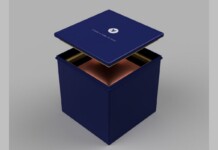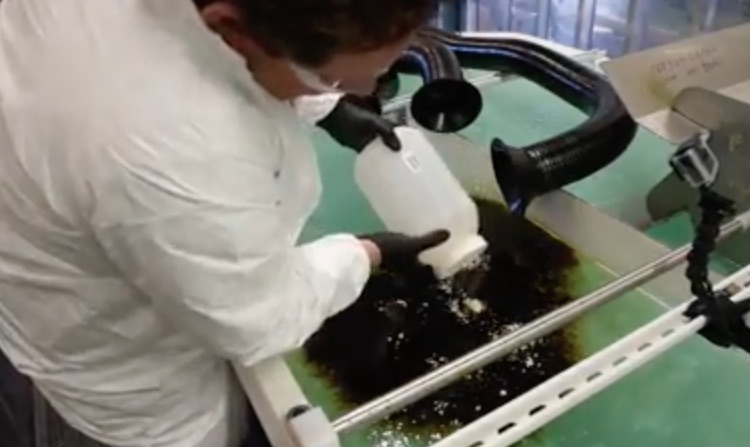Lowly sawdust, the waste that’s sometimes tossed onto home garage floors to soak up oil spilled by amateur mechanics, could receive some new-found respect.
Researchers at the Department of Energy’s Pacific Northwest National Laboratory have chemically modified sawdust to make it exceptionally oil-attracting and buoyant—characteristics that are ideally suited for cleaning oil spills in the icy, turbulent waters of the Arctic. The nontoxic material absorbs up to five times its weight in oil and stays afloat for at least four months.
The team looked to develop an environmentally-friendly and inexpensive material that floats despite rough or freezing waters and can support in-situ burning. Not wanting to create more pollution if emergency responders can’t retrieve oil cleanup material, Bonheyo’s team considered other natural ingredients like rice hulls and silica. But they ultimately found their winner in a fine dust called wood flour–A woodworking byproduct often used to make wood composites.
MORE: Costa Rica Has Been Powered Only By Renewable Energy For 122 Days
“Most of today’s oil remediation materials are designed for warm water use,” said PNNL microbiologist George Bonheyo, who leads the modified sawdust’s development from PNNL’s Marine Sciences Laboratory. “But as ice retreats in the Arctic Sea, fossil fuel developers are looking north, and we need new oil spill response methods that perform well in extreme conditions.”
RELATED: Teenage Girl Turns Plastic Trash Into Million-Dollar Biofuel
To make the dust into a thirsty oil mop, researchers chemically attach components of vegetable oil onto the material’s surface. These attachments make the modified material oil-grabbing and water-shunning. The final product is a light, fluffy, bleached powder. The team is also trying out adding tiny, oil-eating microbes – fungi and bacteria – to the powder’s surface so any left-behind material could naturally break down oil over time.
Applying the modified sawdust is simple: sprinkle a thin layer over oil on the water’s surface. The material immediately starts soaking up oil, creating a concentrated and solid slick that stays afloat thanks to the material’s buoyant nature. The oil-soaked material can either be burned or retrieved.
CHECK OUT: FDA Finally Bans Antibacterial Soaps Containing Triclosan and 18 Other Chemicals
The team is using PNNL’s unique Arctic simulation lab in Sequim, Washington to evaluate the material in icy waters. The facility is a customized shipping container that cools down to as low as 5 degrees Fahrenheit, which prompts researchers to don snowmobile suits and ski masks while they work. Ice slush forms on the surface of water that circulates inside a 290-gallon raceway pond placed inside the bitterly cold lab space. Oil is spilled on the slushy surface, followed by a sprinkle of modified sawdust. Tests have shown the material’s water-repellent nature prevents ice from forming on it, allowing it to soak up oil and remain at the surface.
In the coming months, PNNL will further evaluate the modified sawdust. The material will need additional testing and approval by multiple agencies before it can be used at actual oil spills.
(WATCH the video below)
Spread The Positivity: Click To Share – OR,




















